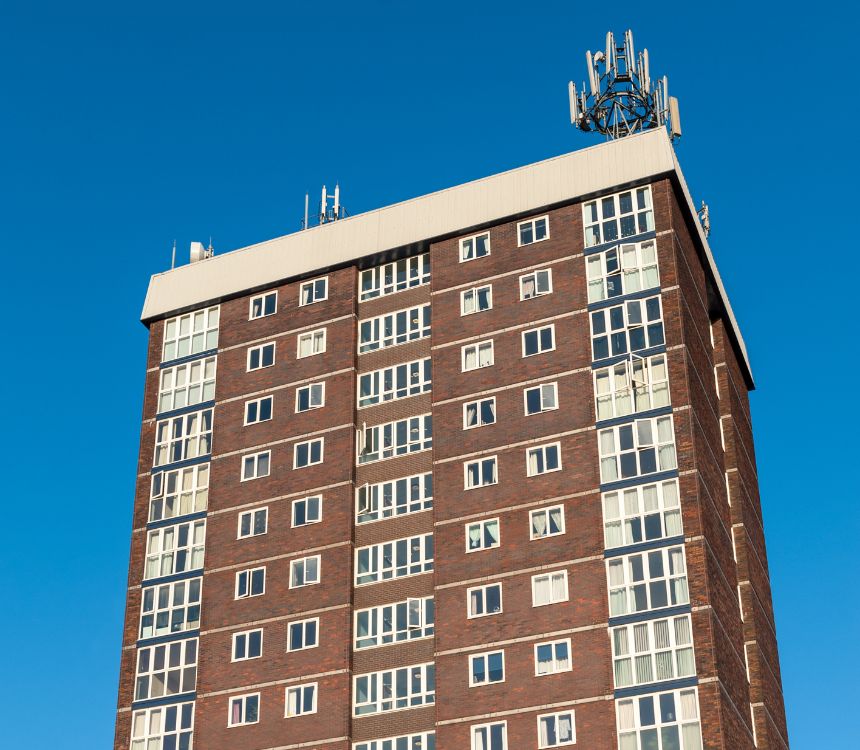If you’ve been looking to buy, sell or remortgage a flat in the UK over the past few years, chances are you’ve come across the term EWS1 Certificate. It’s one of those bits of property jargon that suddenly became part of everyday conversations after the Grenfell Tower tragedy in 2017. Many leaseholders found themselves stuck, unable to sell or remortgage their homes, because lenders wanted reassurance about building safety. The EWS1 form – often called an EWS1 Certificate – was created as part of the solution.
But what exactly is it? Who needs one? And why has it become so important in the UK housing market? Let’s break it down properly.
What is an EWS1 Certificate?
An EWS1 Certificate is a form used to confirm whether the external wall system (EWS) of a residential building has been checked for safety, particularly with regard to fire risks.
EWS stands for “External Wall System”. This includes cladding, insulation, balconies and any other materials attached to the outside of a block of flats. After Grenfell, concerns grew about the safety of cladding and the way some buildings had been constructed. To restore confidence, the Royal Institution of Chartered Surveyors (RICS), in collaboration with lenders and government bodies, introduced the EWS1 form in December 2019.
The form is completed by a qualified professional, usually a chartered fire engineer or surveyor with specialist knowledge. It provides a clear “yes or no” type confirmation that lenders can rely on when assessing mortgage applications.
Worried about whether you need an EWS1 Certificate?
Speak to our friendly mortgage experts today and get clear answers before you apply.
Why Was the EWS1 Form Introduced?
Before 2019, there was no consistent way for lenders to check if the cladding or wall systems on a building were safe. After Grenfell, banks understandably became much more cautious. Many started refusing mortgage applications for flats in blocks with cladding – even when the risk was minimal.
This left leaseholders trapped: unable to sell, unable to remortgage, and in some cases, paying for expensive interim safety measures like waking watches or higher insurance premiums.
The EWS1 Certificate was designed as a standardised process to solve this. It’s not a legal requirement in itself, but it quickly became the industry standard because most major lenders demanded it before approving mortgages on affected buildings.
Which Buildings Need an EWS1 Certificate?
This is where things became tricky. When first introduced, the EWS1 form was mainly aimed at residential buildings over 18 metres high (roughly six storeys or more). However, over time, lenders began requesting EWS1 forms for much smaller blocks – sometimes even buildings under 11 metres – out of sheer caution.
This widened scope caused a huge backlog, with limited numbers of qualified professionals available to carry out the checks. Thousands of leaseholders across England, Wales, and Scotland were caught in limbo.
To address this, the UK Government has since clarified the rules. According to guidance updated in 2022:
- EWS1 forms are only required where there are genuine concerns about cladding or wall system safety.
- Not every building needs one, particularly smaller blocks under 11 metres, unless there are specific risks.
- The form is for valuation purposes only; it is not a substitute for a full fire risk assessment.
What Does an EWS1 Certificate Show?
The certificate is essentially a signed statement by a qualified professional about the fire safety of the building’s external walls. There are two broad categories of results:
- Option A – No significant risk:
- A1: No cladding present.
- A2: There is cladding, but it is not combustible.
- A3: Combustible cladding is present, but the risk is so minimal that no further action is needed.
- Option B – Potential risk:
- B1: The cladding has some issues, but the fire risk is low enough not to require remediation.
- B2: The cladding is a significant fire risk, and remediation works are required.
For leaseholders, an A1, A2, A3, or B1 result usually means they can move forward with selling or remortgaging. But a B2 result can be devastating, as it indicates costly remedial work is necessary.
Who Can Complete an EWS1 Certificate?
Not just anyone can fill in an EWS1 form. It must be signed by a suitably qualified professional with expertise in fire safety and building materials. Typically, this is a chartered fire engineer, or in some cases, a surveyor with the right level of accreditation.
The professional is also covered by professional indemnity insurance, which is vital because lenders rely heavily on the certificate when making lending decisions.

How Much Does an EWS1 Certificate Cost?
The cost varies, and it’s usually the freeholder or managing agent who commissions the inspection rather than individual leaseholders. The price depends on the size of the building, the complexity of the construction, and the availability of qualified inspectors.
In some cases, costs are shared among leaseholders through service charges. Unfortunately, fees can be high, running into thousands for a single building.
The Controversy Around EWS1 Certificates
While the EWS1 system was intended to bring clarity, it has also brought stress and financial strain for many. The main problems have been:
- Backlogs and delays: With only a limited number of qualified professionals, some leaseholders waited months or even years for their building to be assessed.
- High costs: Inspections and remediation works are expensive, and there has been ongoing debate about who should foot the bill – leaseholders, freeholders, developers, or government schemes.
- Mortgage blockages: Even where guidance said an EWS1 wasn’t needed, some lenders still demanded it, effectively freezing parts of the housing market.
- Mental health toll: Thousands of people were left in limbo, unable to sell or move, while living with uncertainty over the safety of their homes.
Don’t let building safety rules hold you back!
Let us find the right lender for your flat, even if an EWS1 is required.
Government Support and Recent Changes
Recognising the chaos, the government has rolled out several support measures:
- Building Safety Fund: Designed to help cover the cost of removing unsafe cladding on high-rise buildings.
- Leaseholder Protections: In 2022, new laws in England prevented leaseholders from being forced to pay for most cladding remediation.
- Guidance Updates: Lenders have been reminded that not every building requires an EWS1. The UK Government, RICS and lenders are working towards more proportionate risk assessments.
These changes are starting to ease the pressure, but the issue has not completely disappeared.
Do You Need an EWS1 Certificate to Sell or Remortgage?
The frustrating answer is: it depends.
- If your building has no cladding at all, your freeholder or managing agent should be able to provide confirmation, which often satisfies lenders without an EWS1 form.
- If your building has cladding but is considered low risk, a lender may not insist on the form.
- However, if cladding is present and the lender is cautious, they might still request an EWS1.
The best approach is to check with your freeholder and managing agent first. If you’re selling or remortgaging, speak to the lender early on to understand their specific requirements.
Key Takeaways
- An EWS1 Certificate confirms whether a building’s external walls and cladding pose a fire safety risk.
- It was introduced in 2019 to give lenders confidence after the Grenfell tragedy.
- Not all buildings need one, but many lenders still request it when cladding is involved.
- Results are graded from A1 (no cladding) to B2 (serious fire risk requiring work).
- Leaseholders have often been caught up in delays, costs, and uncertainty.
- The government has introduced protections and funding to reduce the burden on leaseholders.
So, what is an EWS1 Certificate? In simple terms, it’s a form that helps reassure mortgage lenders that a block of flats has been checked for dangerous cladding or fire risks. It was meant to bring peace of mind, but in practice, it has caused as many headaches as it has solved.
If you’re a leaseholder or buyer in the UK, the key is not to panic. Not every building needs an EWS1, and the rules are gradually being refined to focus only on genuine risks. Speak to your managing agent, seek legal advice if needed, and check the latest guidance from RICS and the government.
The EWS1 Certificate may feel like a barrier, but in the long run, it’s about making sure our homes are safe – and that tragedies like Grenfell never happen again.
FAQs
An EWS1 Certificate is generally valid for five years from the date of issue, provided there are no significant changes to the building’s external walls during that time. If major works are carried out or if new safety concerns arise, a fresh assessment may be required sooner.
No, not all flats require an EWS1 Certificate. It is usually requested where cladding or external wall materials could pose a fire risk. Smaller buildings and those with no cladding are often exempt, but some lenders may still ask for reassurance before approving a mortgage.
The responsibility typically falls to the building owner or freeholder, who may pass the cost through the service charge to leaseholders. In some cases, government funding or developer commitments may cover the cost instead, particularly if cladding remediation is involved.
Yes, it is possible to get a mortgage without an EWS1 Certificate if your building does not have cladding or is confirmed to be low risk. However, if cladding is present, many lenders will insist on the certificate before making a lending decision.
The certificate looks at the external wall system, including cladding, insulation, and balconies. It does not cover internal fire safety features such as alarms or sprinklers. The focus is on whether the external walls present a fire hazard.
Your first step is to contact your managing agent or freeholder. They will know if an EWS1 inspection has been carried out and should be able to provide a copy of the certificate if it exists.
No, individual leaseholders cannot apply directly. The process must be organised by the building owner, freeholder, or managing agent, since the assessment covers the entire block, not just a single flat.
If an EWS1 Certificate gives a B2 rating, it means the cladding or external wall materials pose a serious fire risk. In that case, remediation works are required before lenders are likely to approve mortgages. Funding options may be available depending on the building’s size, location, and ownership.
In many cases, yes. If your flat is in a block with cladding, lenders often ask for an EWS1 Certificate before agreeing to a remortgage. Buildings with no cladding or very low risk may not need one.
The most reliable information is published by the Royal Institution of Chartered Surveyors (RICS) and the UK Government’s Building Safety Programme. These sources are regularly updated to reflect changes in guidance and policy.
Continue Reading
Can you get a mortgage on a flat without an EWS1 in the UK?
How do you buy someone out of a mortgage?
What is a good mortgage rate for a first-time buyer?
